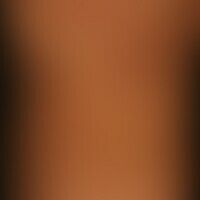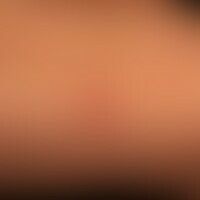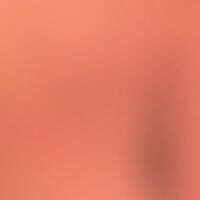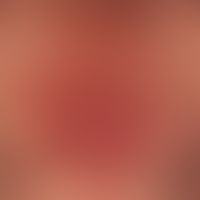Image diagnoses for "Plaque (raised surface > 1cm)", "red"
423 results with 1872 images
Results forPlaque (raised surface > 1cm)red
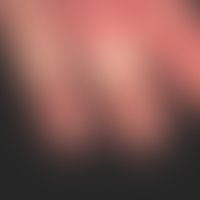
Acrodermatitis continua suppurativa L40.2
Acrodermatitis continua suppurativa:pronounced sterile-pustular, acral dermatitis with extensive destruction of the nails; the huat alterations are combined with severe arthritis psoriatica.

Adult dermatomyositis M33.1
Dermatomyositis adult: variable and inconsistent, multiple large blurred, red to red-violet erythema.

Dyshidrotic dermatitis L30.8
Dyshidrotic hand eczema: Condition following a large-bubble episode of dyshidrotic eczema.
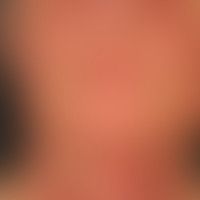
Lupus erythematosus subacute-cutaneous L93.1
lupus erythematosus, subacute-cutaneous. multiple, extensive, sharply defined, slightly scaly, slightly raised PLaques. 62-year-old woman. DIF: LE-characteristic. ANA: positive; Anti-Ro: positive.

Lichen planus classic type L43.-
Lichen planus (classic type): for several months persistent, red, itchy, polygonal, partly confluent, red, smooth, shiny (in places anular) papules on the trunk. detail view.
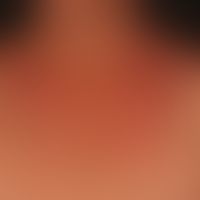
Psoriasis (Übersicht) L40.-
Psoriasis seborrhoeic type: Psoriasis with sharply defined, edge-emphasized, flat, hardly elevated, therapy-resistant, scaly plaques.
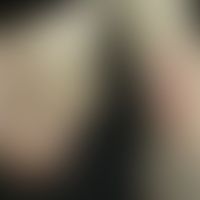
Necrobiosis lipoidica L92.1
Necrobiosis lipoidica: 44-year-old woman. 10 years ago, fracture of the ankle joint with surgical treatment, for about 8 years beginning changes in the scars on the inner and outer ankle. Histologically, a necrobiosis lipoidica could be confirmed. On request, she was under constant diabetological control, since both previous pregnancies had been accompanied by insulin-dependent gestational diabetes.

Dyskeratosis follicularis Q82.8
Dyskeratosis follicularis: disseminated, chronically stationary, 0.1-0.2 cm in size, flatly elevated, moderately firm, non-itching, rough, red, scaly papules which unite at the top to form a blurred plaque; skin lesions have existed in varying degrees in this 53-year-old patient for several years.
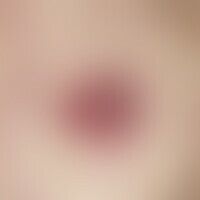
Basal cell carcinoma superficial C44.L
Basal cell carcinoma, superficial, slow-growing, sharply defined, coin-sized, reddish-brownish, low-grade infiltrated plaque with a distinct edge accentuation of small, shiny nodules.

Lichen planus (overview) L43.-
Lichen planus verrucosus: linearly arranged verrucous lichen planus; constant tormenting itching.
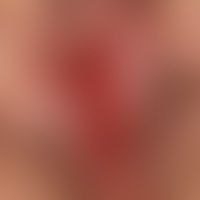
Vulvitis plasmacellularis N76.3
Vulvitis chronica circumscripta plamacellularis: Chronic, painful, deep red inflammation of the labia minora, urinary incontinence, malignancy can be excluded, but due to the symmetrical "imitation"-like distribution, it is clinically unlikely.

Primary cutaneous follicular lymphoma C82.6
Primary cutaneous follicular center lymphoma: coarse, painless, solid tumor, clearly elevated above the skin level, grown within 3 months, two smaller smooth, shiny tumors in the immediate vicinity of the arm.

Candida sepsis B37.7
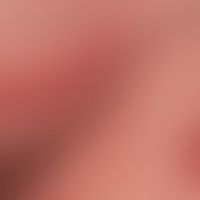
Mycosis fungoides C84.0
Mycosis fungoides of the "pagetoid reticulosis" type. slight tendency to progression. blander clinical course over years with intermediate complete remission. typical clinical picture with the girlad-like limitation
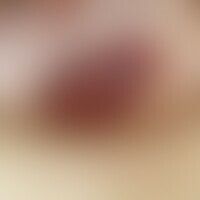
Lichen sclerosus (overview) L90.4
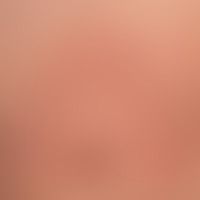
Parapsoriasis en plaques large L41.4
Parapsoriasis en plaques large: asymptomatic, moderately sharply defined disseminated patches and easily eliminated plaques.

Condylomata lata A51.3
Condylomata lata: broadly seated, oozing, perianal papules. secondary stage of syphilis acquisita. there is infectivity!

Cimicose T00.9
Cimicosis. acutely appeared after hotel overnight, smooth, standing in a line-shaped grouping, intensely itching, 0.2-1.0 cm large, red papules and papulovesicles with (indicated) central bite sites. Around the bite sites a collateral erythema appears.

